Stop the presses now with all the awards talk for Leonardo DiCaprio and his performance as 1820’s frontier man Hugh Glass in Alejandro Inarritu’s THE REVENANT. There are two more notable and deserving performances that command, and demand, greater attention; that of Mother Nature herself and, Tom Hardy. Why no one is talking Tom Hardy for awards consideration for his role is beyond me. His performance in THE REVENANT is so textured with emotional range and nuance, with the primal forces of life itself; his is the performance to watch. His calm controlled, oft maniacal, manipulation that he spins on a dime is pure brilliance, and it is the fuel from which DiCaprio is able to deliver possibly the best work of his career (albeit not the best work in this film). And as for Mother Nature, she is on display in full force in all her resplendent glory; from the most beauteous to the harshest and most unforgiving, all of which is showcased to its richest splendor by cinematographer Emmanuel Lubezki.

Primal. Meditative. Bleak. Beautiful. Brutal. Savage. Serene. THE REVENANT is a perfect marriage of man versus man, man versus animal, man versus Mother Nature, and above all, man versus himself. Based in part on Michael Punke’s 2002 fact-based novel of the same name, which itself was inspired by an account by Daniel Potts of the Rocky Mountain Fur Trading Company who worked with Hugh Glass, describing “an unknown man” who barely escaped an attack by a Native American war party only to find himself then mauled by a bear and left for dead. Other accounts by Glass himself relate stories of a traveling partner of his who was mauled by a bear and killed. Still other tales tell of Glass as the man being the mauled by a bear and left for dead.
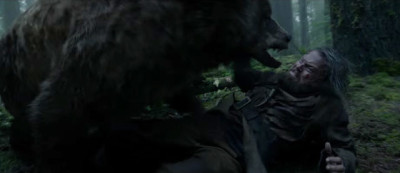
The one thing that is certain, and which is where screenwriter Mark Smith and Inarritu begin this cinematic story, is the events of 1823 when a group of beaver trappers and traders with the Rocky Mountain Fur Company were attacked by the Arikara tribe near the Missouri River which is located in present-day South Dakota. Many of the traders were killed. Others ran for safety while trying to save the beaver pelts for which they were being hunted and attacked. Retreating into the mountains, Glass, well known for his abilities as an explorer and scout, went ahead to map out a route, as well as find food and shelter.

As THE REVENANT tells the story, now deep into the woods, Glass encounters an angry mother bear protecting her cubs. She battles with Glass, mauls him and rips his body to shreds leaving him just this side of death. Found by the other traders, all under the leadership of Captain Andrew Henry, the Captain knows it will only be a matter of time before (1) the Arikara catch up to them and (2) Glass dies. But the Captain is nothing if not “Christian” and wants Glass to have humane treatment and care for his remaining days, along with a proper burial. He also wants to save his own hide and that of his remaining men.

Fearing the Arikara are still tracking them, the Captain seeks two volunteers to stay with Glass while the rest of the group move high up into the mountains as they make their way back to the protection of Fort Kiowa. Young Jim Bridger doesn’t hesitate to stay with Glass. [Note – Jim Bridger would go on to become one of the most famous frontier mountain men of the 19th century.] Neither does Glass’s son Hawk who has been travelling with them. (Glass was married to a Pawnee woman, killed by a white man during an attack on their home. Hawk survived the attack and he and his father have been unseparable since.) Surprisingly, John Fitzgerald, who has had nothing but a cantankerous, volatile, even hateful relationship with Glass, also volunteers with a humble sincerity that touches Captain Henry.

As comes as no surprise, Fitzgerald isn’t thinking about Glass or Bridger or anyone else. Fitzgerald is only thinking about Fitzgerald and it doesn’t take long before Glass’s son has “disappeared” and Glass himself is pronounced dead and buried by Fitzgerald, allowing Fitzgerald and Bridger to head out and make their way to the Fort.
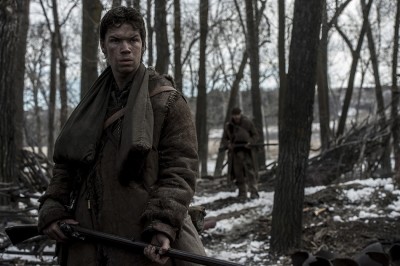
But Glass is anything but dead and like Lazarus rises, or rather crawls, from his shallow grave. Unable to walk or speak and barely able to move from his injuries, with an unfathomable determination to survive, Glass crawls across the frozen ground, inching his way ever forward. Braving the elements with his only protection the bear skin from the very bear that attacked him, slowly he heals. Along the way he is aided by a lone Native American, himself on a journey. There are no words spoken. Only tacit knowing. A horse. A hawk. Mother Nature herself not only tests Glass, but helps him. The struggle is real. It is long and it is hard. And through it all, Glass has his memories of his wife that, in a very Malick-esque fashion, drive him onward. [It is alleged that in real life, it was a six week crawl of over 200 miles to safety.]
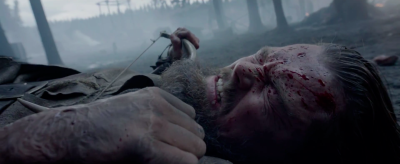
And what of the rest? All eventually return to the Fort and on the arrival of Fitzgerald and Bridger learn of Glass’ fate. But news soon comes that belies Fitzgerald’s story and a new game is afoot.
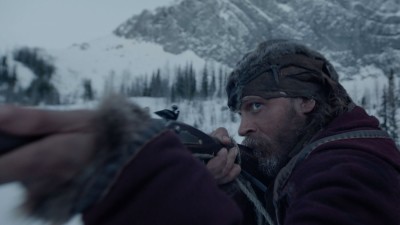
As Hugh Glass, Leonardo DiCaprio does give the best performance of his career. Without the benefit of speech for virtually 90% of the film, he relies on wheezing, grunts, inaudible winces of pain and the physicality of facial expressiveness and hampered limbs to convey emotion and tell of Glass’s internal struggle for survival. The result is effective and believable, but falls short when compared to Tom Hardy’s Fitzgerald.

Tom Hardy is the one to watch. The calm calculated manipulation of those around him. The bouts of “insanity”. The nervousness of lies about to catch him. The itch of greed. Nuanced to perfection, Hardy is rapier in his performance. And his monologues? Killer.
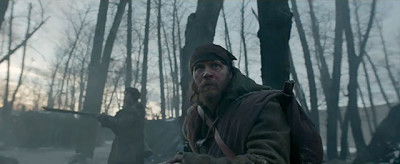
Standout are Domhnall Gleeson and Will Poulter as Captain Andrew Henry and Bridger, respectively. Poulter brings this exciting wide-eyed innocence and naivete to Bridger, along with a little hero worship for Glass that starts with the film’s opening attack scene. He wears his heart and on his sleeve and Poulter makes us feel it. Gleeson stirs interest with his take on Captain Henry. Always dressed in full uniform but with a slightly foppish air, even when dirty and bedraggled, Henry stands tall and tries to elicit confidence through orders and the chain of command. Gleeson adds a palpable level of frustration to the character in these “confident moments” that give Henry some depth and texture, as well as vulnerability.
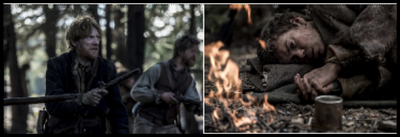
An emotional powerhouse is Forrest Goodluck as Glass’s son Hawk. One of the most intense father-son dynamics I have seen on screen, Goodluck and DiCaprio have a chemistry that is undeniable. As Glass and Hawk, it’s as if they are tethered by an invisible umbilical cord. Every tear Goodluck sheds, every cry of pain, every move destined to make a father proud, grabs at your heart.
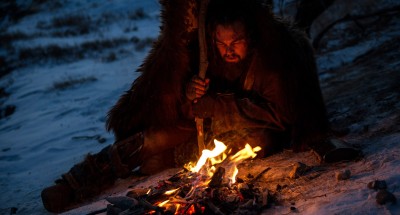
But the star of THE REVENANT is the technical excellence and its visual imagery. Cinematographer Emmanuel Lubezki stuns and dazzles thanks to his use of the Alexa 65 and natural light. Yes. Only natural light is used for lensing THE REVENANT. With a visual choreography, Lubezki uses wide lenses ranging from 12mm to 21mm to capture faces and landscapes, the latter of which are breathtaking. There is a fluidity to the lensing that equates to the ebb and flow of the rushing river or the wind through the trees, whipping snow off a deserted plain. Striking are nighttime sequences along a snow covered river bed with only the glowing light of a fire set against a cave. Without giving away any spoilers, breathtaking is a powerful sequence involving a horse and Glass. You will gasp at the beauty yet find yourself unable to look away from the horror of it.
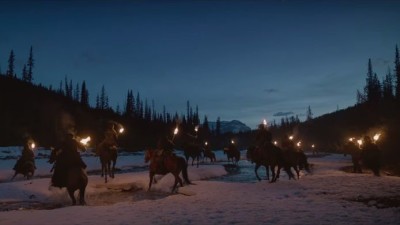
Production designer Jack Fisk is masterful with his vision of the period and his implementation of nature into the production design itself. He designed “for Nature”. Working with historian Clay Landry, from the trappers’ skiffs to Fort Kiowa to Native American encampments and beyond, Fisk leaves no stone unturned. Stripping the outdoors down to its basest and building up from there, natural light comes in to play with Fisk’s designs, most notably with dream sequences involving a partially destroyed church as well as the very powerful “mountain of skulls.”

Joining in the level of below the line expertise is the work of costume designer Jackie West. Gorgeous is the detail within individual costumes, particularly the patchwork leather pants with meticulous thick whipstitching worn by Hardy’s Fitzgerald. One can almost feel the heft of the sewing of the hide and the thick eye of a bone needle binding the material together. Similarly, Captain Henry’s wool military uniform is identical to that of the day and, in fact, a duplicate of the uniform actually worn by Henry himself which is currently housed in a museum display. (West was given access to extensively photograph and then make patterns from the original.) Attention to detail is distinctive and effective within the Native American costume as West creates costumes for both the Pawnee and Arikara tribes specific to the time. But the costuming crown jewel is Hugh Glass’s bear skin which is the metaphoric ligament to the Hugh Glass story of survival. Take note as the film progresses and the bear skin and the torn rags of clothing remaining after the bear attack “deconstructs” with time and hardship, akin to Glass shedding his protective skin as he regains his strength. That which almost killed him, saves him. Important for animal activists and animal lovers is the knowledge that the bear skin used by West in THE REVENANT comes from controlled Canadian bear kills. Similarly, the beaver pelts. No animals were randomly killed for costume purposes.
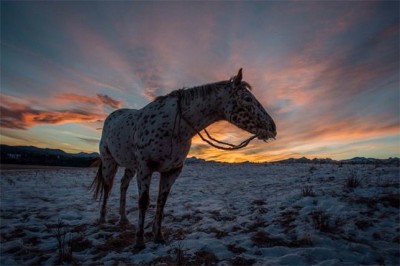
Editing is crucial to THE REVENANT with both sound and visuals. Reteaming with Inarritu is his long-time editor Stephen Mirrione whose work is never more impressive than with the opening scene of the film. Watching wide-eyed and jaw agape, the tone of the story is set with the opening frames. The unexpected and the surprise of it, reigns supreme. As the primal beauty of the country unfolds before us, so do the sounds of nature. Mirrione lovingly lingers on Lubezki’s crisp and clean mountain vistas while sharpening the pace when men are on the move or action is at play. Hand-in-hand is the sound design which is so in tune with the purity of the land, we hear every ripple or rush of a river, the drip of melting ice from a tree branch, the rustle of wind in the trees or crunch of crisp leaves under the feet of men, a single hoof step of a horse, the sliding of a knife from a sheath, the slow cock of a rifle. Our senses are heightened just in viewing and listening to THE REVENANT.
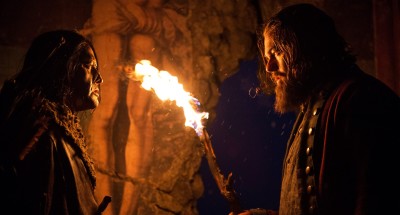
The final arrow in Inarritu’s cinematic quiver is an evocative melodic score by Ryuichi Sakamoto and Alva that pulses with the heartbeat of life.

As near perfection as the golden hues of Mother Nature’s own “magic hour”, THE REVENANT is pure Oscar gold.
Directed by Alejandro Gonzalez Inarritu
Written by Mark L. Smith and Alejandro Gonzalez Inarritu based on the novel by Mark Punke
Cast: Leonardo DiCaprio, Tom Hardy, Domhnall Gleeson, Will Poulter, Forrest Goodluck












